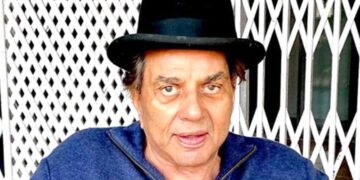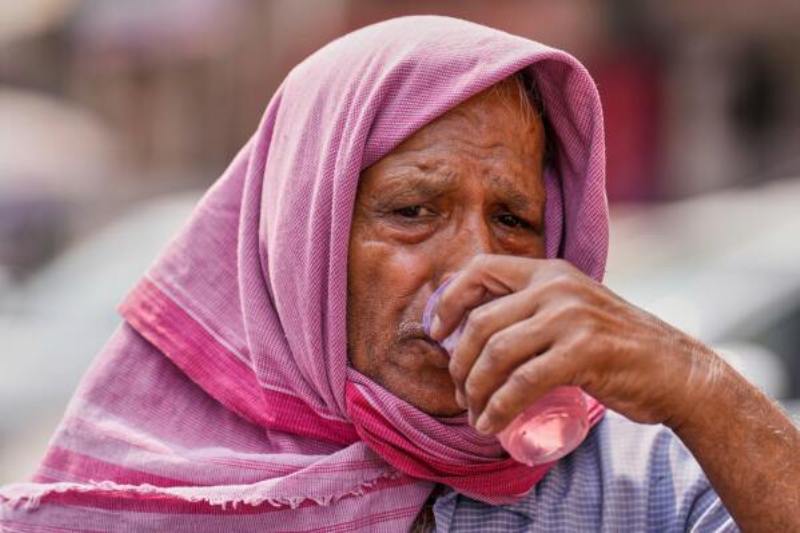By Vijayetta Sharma
This year, around 2,300 people died during the heatwave that affected 12 major European cities between June 23 and July 2. Of these, approximately 65 percent deaths were attributed to a rise in temperature by 1-4 °C, arising from the burning of fossil fuels.
Older people, particularly those above 65 years, accounted for nearly 88 percent of the climate-driven excess deaths.
Globally, heat-related mortality among the elderly has increased by 85 percent since the 1990s, according to WHO and UNEP. In comparison, India reported a 55 percent rise in such deaths among those aged over 65 between 2000–04 and 2017–21.
In 10 Indian cities, daily mortality among the elderly rose by 14.7 percent, attributed to extreme heat events. Uttar Pradesh and Rajasthan recorded the highest number of heatwave-related deaths in the country.
In 2022, the elderly made up 10.5 percent of India’s population. This number is projected to nearly double by 2050—surpassing the youth population by the mid-21st century. A majority (71 percent) of older adults live in rural areas. Older women constitute a significant share of the elderly population, particularly in rural India. By 2021, their population outnumbered men by 4 million (67 million elderly men and 71 million elderly women).
As older adults are disproportionately vulnerable to heat-related illnesses and mortality, this convergence of climate stress and demographic transition raises urgent concerns for policy makers to strengthen public health systems, develop infrastructure resilience and social protection policies.
Causes of heat-related deaths among the elderly
Mortality among old-age populations during heatwaves is driven by reduced thermoregulation: lowered sweat response and lower skin blood flow which reduces their ability to dissipate heat efficiently. This increases their vulnerability to heat stress and hyperthermia, high body temperature due to heat stroke or heat exhaustion.
Pre-existing health conditions such as heart disease, kidney disease, or even mental health issues also aggravate heat risk. Moreover, reduced thirst perception and lower fluid intake predisposes them to dehydration, electrolyte imbalances, kidney injury and heat exhaustion.
Their vulnerabilities are also shaped by gender-based roles. Elderly women in low-income or rural areas face higher heat exposure due to caregiving roles in families, poorly ventilated housing and unequal access to resources. Gender norms fostering patriarchy, limited access to household cooling, non-ventilated kitchens and social isolation amplifies their risk of protective care at times of heat events.
Elderly men, particularly in low-income settings, also face heightened heat risk due to continued outdoor labor such as farming or construction, leading to prolonged exposure with limited hydration or relief. Reduced thirst perception, alcohol use and inadequate fluid intake impair thermoregulation, increasing the risk of dehydration, heat exhaustion and cause injury to the kidneys. Social norms may discourage early care-seeking, while isolation limits access to timely support during heat crises.
A critical concern for elderly climate adaptability is the impact of tropical nights, when temperatures stay above 20 °C, compromising the body’s ability to cool during sleep. This heightens the risk of heat-related illnesses, particularly among older adults who are more sensitive to thermal stress. Persistent night-time heat also hinders respiratory recovery and rest, worsening cardiovascular and respiratory strain, especially in deprived areas without adequate cooling.
Extreme heat reduces social participation among the elderly. Those living alone or with limited support often delay seeking help, leading to higher mortality. Reduced mobility, isolation and lack of engagement with community further impact their mental and overall well-being.
Solutions to heat stress
The rising burden of extreme heat, compounded by the rapidly growing geriatric population, poses a serious challenge to human survival and well-being.
Researchers at Cornell University have developed a thermoelectric device (TED)-based cooling garment for personal cooling that maintains skin temperature in environments as hot as 40 °C. However, for elderly populations—especially those with limited incomes and heightened vulnerability to heat stress—affordability and access to such innovations remain significant concerns.
Targeted support through social and health protection measures can safeguard vulnerable populations during increasingly frequent and severe heatwaves. The Government of India, through recent initiatives of National and State-level Heat Action Plans, has emphasised inclusive strategies for climate resilience to safeguard the health of the general population, but elderly care still falls within the cracks.
A strategic action plan by the Ministry of Health and Family Welfare (MoHFW) to scale and subsidise heat-protection technologies can extend critical protection to those most vulnerable during extreme heat. Ensuring these innovations reach elderly men and women, outdoor workers, low-income groups and rural populace would significantly reduce heat-related mortality and enhance public health resilience.
Health departments can authorise the local bodies to publish real-time, all-cause death data, including heat-related deaths. This can enable timely tracking of the demographic, medical, occupational and socio-economic evidence of deaths due to rising temperatures.
Heat mortality surveillance, risk mapping and research on vulnerable groups and urban heat islands along with training disaster and health personnel can be incorporated into the heat action plans. More scientific studies demonstrating how heat affects different age groups with pre-existing health conditions, income levels and work-related exposures across India can be encouraged by the government.
Regular inter-ministerial meetings between the departments of Health, Urban Development, Environment and Agriculture to review the implementation of State Action Plans on Heat Waves (SPHW) can enhance cross-state knowledge exchange and help shape updated guidelines for the National Action Plan on Heat Waves (NPHW).
There are reported discrepancies in national and state level data in India on the number of deaths due to heat waves. The National Crime Reports Bureau reported 4,000 more deaths than the National Disaster Management Authority between 2009 and 2022. Both organisations operate within the Ministry of Home Affairs.
Availability of statistical data on the state-wise breakdown in number of deaths can help in devising the specific policy directions for safeguarding the geriatric population with or without morbidities as per the specific population parameters of different states.
A common nomenclature for defining a heat wave and its relation to health resilience across different populations, along with associated impacts, will help in understanding heatwave-accompanied morbidities and deaths as a strategic agenda for policymakers, climate scientists and health experts.
A revised national framework for heatwave preparedness can be put in place by devising a coordinated early warning system with the Indian Meteorological Department and MoHFW— using a single mobile app that integrates UMANG, MAUSAM, Meghdoot, Damini and other mobile apps launched by the government for weather-related updates.
This app should provide real-time heatwave alerts, along with comprehensive updates on current weather, city forecasts, rainfall, tourism conditions, earthquakes, cyclones and other climate-related events.
Social media can be effectively utilised by government organisations to disseminate early warnings and forecast information for timely public outreach. To truly address the growing threat of heat, we must shift from reactive, short-term measures to sustained, long-term strategies that reduce overall vulnerability and build systemic resilience.
A focus on reduced carbon emissions, low-carbon strategies for development, transition to renewable energy sources and implementing sustainable practices across all sectors will help in increasing not only climate resilience but also secure the health of our ageing population.
Dr. Vijayetta Sharma is Associate Professor of Public Policy at Manav Rachna International Institute of Research and Studies. She has been a Post-doctoral Research Fellow in Information Science at Indian School of Business. Her research areas are climate change, health policy and governance.















